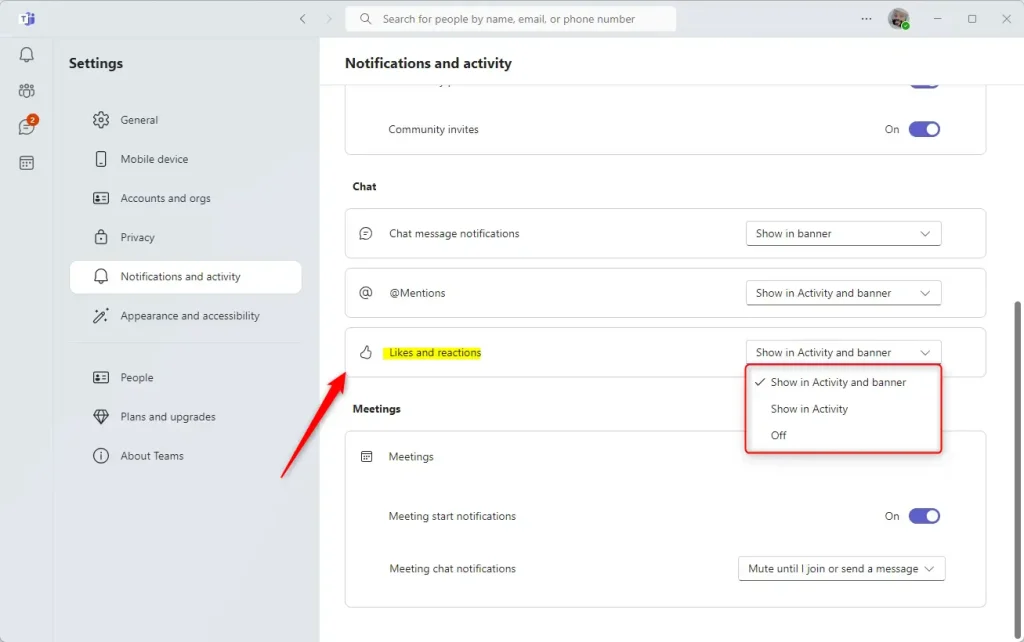This article explains how to turn notifications on or off for likes and reactions in Microsoft Teams.
Microsoft Teams is a collaboration platform developed by Microsoft that integrates chat, video meetings, file storage, and application integration.
The free version is installed on Windows with its icon on the Taskbar.
There are many settings one can enable in the Microsoft Teams app. You can connect your Google calendar, turn the camera and mic on or off on the lock screen, turn read receipts on or off, auto start Teams, disable Teams chat, sync contacts with Teams, connect to Google Calendar, link your mobile device, turning message preview on or off, turn spell check on or off, turn on or off phone number in search results, manage notifications, turn on or off suggested replies in chat, enable or disable sound notifications, enable or disable notifications for incoming calls and meetings, enable or disable notifications during calls and meetings, enable or disable chat message notifications, turn @mentions notifications banners on or off, and more.
Users can also turn notifications for “Likes and reactions” on or off in the Microsoft Teams app to minimize disruptions. Turning them on can help you stay informed of when someone has reacted or liked one of your messages, which can be useful for gauging engagement and feedback.
However, having too many notifications can also be distracting and interrupt your workflow, so turning them off may help you stay focused.
Turn notifications for likes and reactions on or off in Teams
As mentioned, users can turn notifications for likes and reactions on or off in Microsoft Teams.
Here’s how to do it.
First, launch the app by clicking the Start menu and selecting it on the All Apps list.

You can also launch the app from the Taskbar or Taskbar overflow.

When you first launch the Teams app, the mini window will open. Click the expansion button on the menu bar to open the full Teams window.

In the full Teams window, click the Settings and more ( …) button next to your profile picture and select Settings from the menu.

Next, select the Notifications and activity tab on the left of the Settings page. Then, under “Chat,” choose the “Likes and reactions” tile and use the drop-down menu to show or hide notifications.
Your options are:
- Show in Activity and banner
- Show in Activity
- Off

That should do it!
Conclusion:
- Turning notifications for likes and reactions on or off in Microsoft Teams is a valuable feature for minimizing disruptions and staying focused.
- Users can access the settings to manage these notifications within the Microsoft Teams app, allowing for customization based on their preferences.
- Users can choose the level of visibility they desire for these interactions, whether to display likes and reactions in the activity feed and banners or turn the notifications off entirely.
- Following the steps outlined in this post, you can easily adjust the notifications for likes and reactions in Microsoft Teams according to your specific needs and workflow.

Leave a Reply